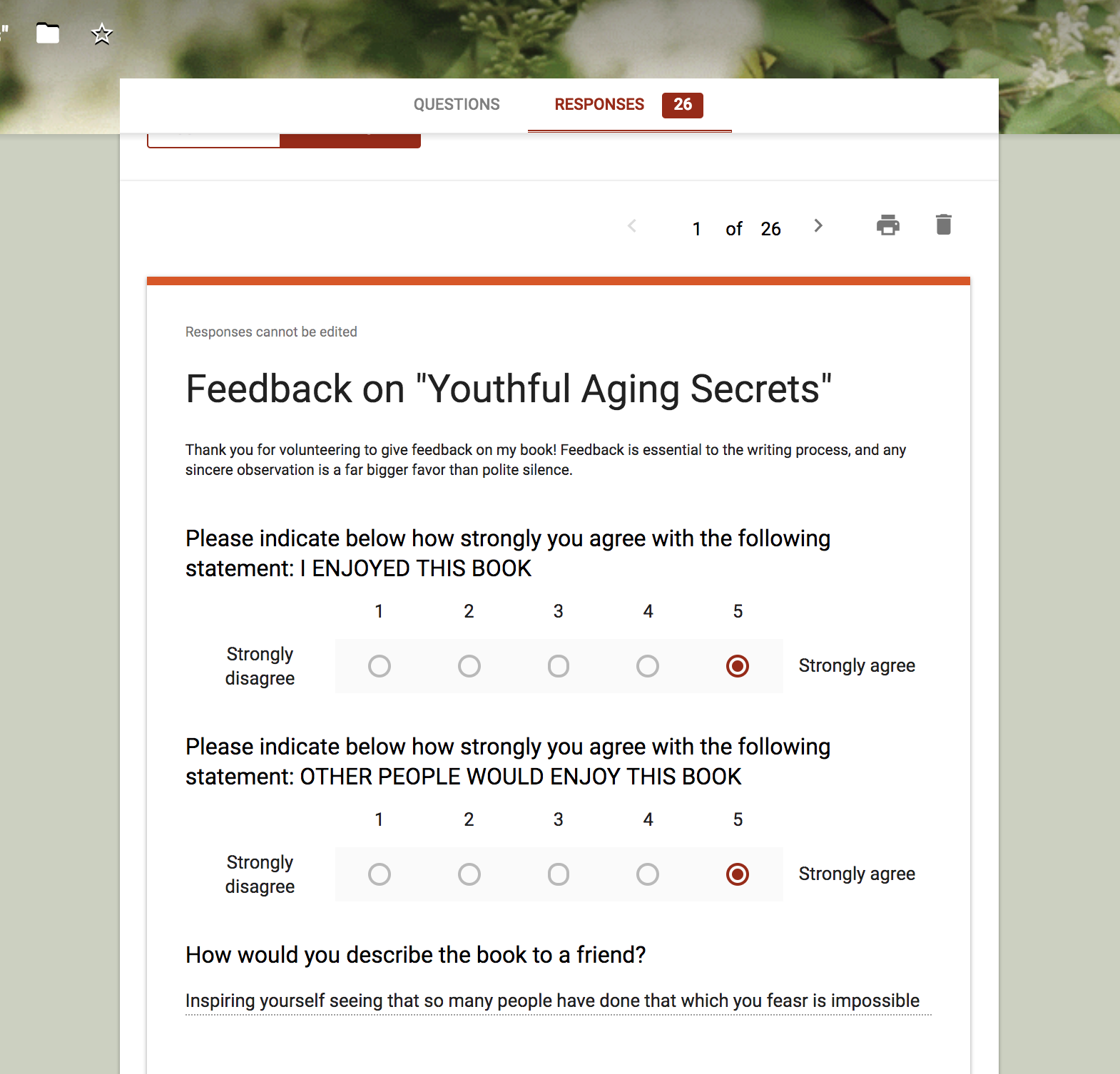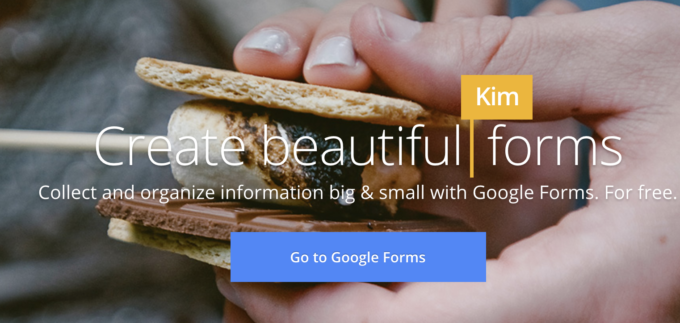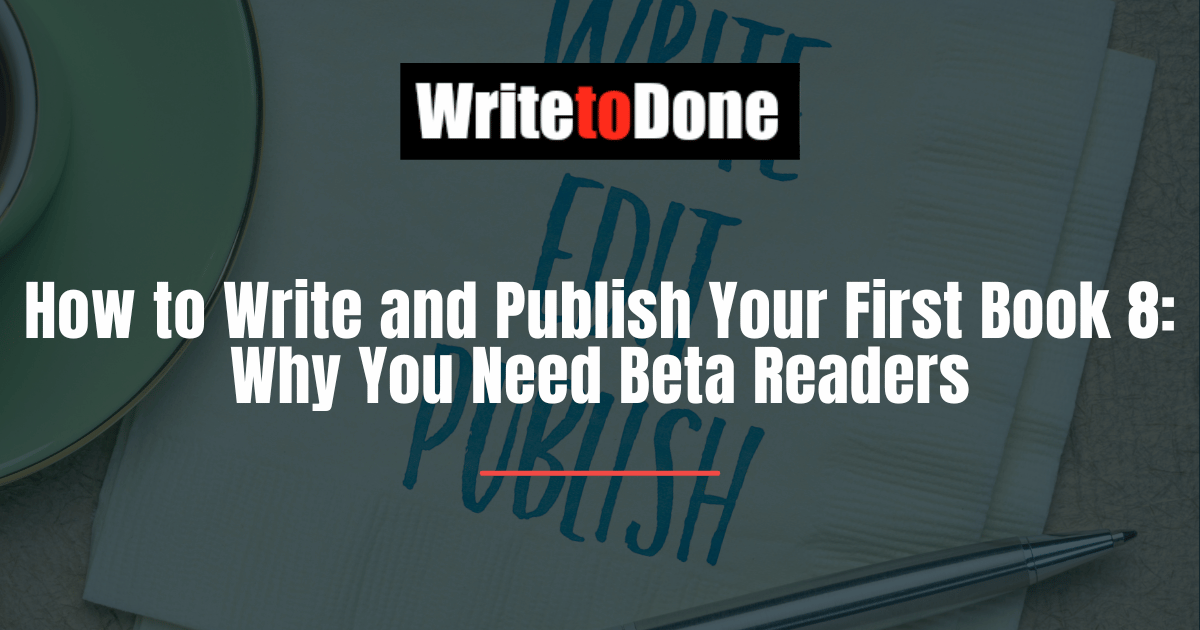What’s the most stressful moment of publishing a book?
You don’t know?
Well, I don’t know either. I’ve still got a couple of weeks to go before hitting the publish button, and maybe that will be the most stressful moment.
But I can tell you about a scary moment: sending out a review copy to beta readers and waiting for the first feedback. More about this stressful stage in a moment.
What are Beta Readers and Why Do You Need Them?
I went through the process of asking for feedback from beta readers because my wonderful Editor, Laura Tong, suggested it. I thought this would be a mildly interesting process that wouldn’t change much about my upcoming book.
I was wrong.
Getting feedback from others was one of the most important steps of creating my book.
You need to get feedback on the final draft from your prospective readers because you want to know whether you’ve reached your target audience, whether the book has the planned emotional impact, and whether there are things you can do to improve the book.
This article is in two parts. The first part is a case study about the feedback process for my book, and what you can learn from my experience. The second part is step-by-step information on how to set up a feedback process. If you are planning to write a book, I suggest bookmarking this article.
Part A: Why Beta Readers Are Valuable Team Members
When you’ve completed the final draft, you need to put your book to the test. You already know that you love your book. But will others love it too?
As part of your publishing team, you need to gather a group of loyal readers who are willing to help you. There are three areas where you will need their help: to give feedback on the cover, to give feedback on the final draft, and to download the book early on and give top reviews on Amazon.
Dave Chesson has written an excellent article about test readers: How to Use Beta Readers to Launch Your Book.
I contacted a group of helpful people who had already given feedback on the cover and I asked them to join the YA Posse (a fun name for the group of beta readers) to give feedback on the book. Of 120 people I wrote to, 31 gave feedback. (26 gave feedback via Google forms and 5 people responded by email.)
I must admit, waiting for the first responses was terrifying!
I kept thinking, “What if people hate it?”
The first questions in the questionnaire can pinpoint whether people actually like the book and whether their emotional response is the one you are aiming for.
You can see the first questions I asked in the screenshot below.
When lots of people responded enthusiastically, I heaved a sigh of relief. In fact, over 85% or beta readers gave the book the top score of 5 stars.
However, I found the real juice further down in the questionnaire, as I’ll explain in a moment.

The Most Important Question
The last question in the questionnaire was: “Any further thoughts you would like to share about the book?” I got some enthusiastic responses. Like this one, for example:
What spoke to me strongest was the mind-over-matter reminder, tied to living “now” full of positive thoughts. Mary’s sharing of her personal stories (naked on a calendar in this one) has always been inspiring to me, so human, so buoyant in spite the difficulties that were the root of the stories. I liked the tone of telling what some people had done as if they were her friends–made an intimate, non-preachy tone. I liked that we were not told we “should” do this or that, but shown what some people had done.
At the same time, I noticed that many of the readers made one of three suggestions. They were couched in different ways, but you could see clear commonalities. The suggestions were as follows:
The Three Suggestions
1. Make the message of each story clearer
2. Put more of ME into the book.
3. Highlight the traits which should be developed for youthful aging.
In response to these suggestions, I added a page with reflections after each of the stories so that the message became clearer. I also included a few more of my own stories which show why I’m so motivated to write this series. And I also highlighted the traits of youthful agers.
In addition, I created a workbook which people can download for free after they purchase the book.
As you can see, the feedback I got was extremely important. The positive response of the majority of beta readers gave me a welcome boost of confidence. And the suggestions of beta readers allowed me to reconfigure the book to make it more valuable.
I you are considering writing a book, make sure you gather a group of beta-readers and ask for feedback. It’s a wonderful feeling to know that there are some enthusiastic readers who have your back and are cheering you on!
Part B: How to Organize the Feedback Process
The four things you need put into place are as follows:
- Create a downloadable PDF
- Set up a Google form for feedback
- Send out emails to potential beta readers
- Give your beta readers a pathway for action
1. Create a Download Link for Your Draft

Step 1: Save your book draft as a PDF and upload it to Dropbox.
Step 2: Go to https://www.dropbox.com/ and find your PDF file.
Step 3: Click on Share and then on Copy link.

Step 4: For downloads, change the end of the link from “0” to “1”. This means that when readers click on the link, the file is immediately downloaded.

2. Set Up a Google Form

Google forms are free. They are also very easy to use and you can make them look attractive if you use one of their templates .
A further advantage is that Google Forms automatically creates a Google Sheet, i.e., a spreadsheet with all responses.
For some questions, I used a linear scale where readers could choose between 1 (strongly disagree) and 5 ( strongly agree). In response to other questions, the reader could write a paragraph or two. I got the most useful responses using the following questions:
If you had to recommend this book to someone in your life, who would you choose and why? and Any further thoughts you would like to share about the book?
The question about to whom the reader would recommend my book to gave me information about my target market. The open question about further thoughts about the book led to important feedback that changed the shape of my book (as I explained above.)
3. Invite the Beta Readers
I sent out a personal email to prospective beta readers. Click here to see it. As I explained above, I used my list of people who had responded to my cover designs to ask for beta readers. If you have a blog or a presence on social media, you could ask for beta readers there or ask friends to help you. You can also look for beta readers on this dedicated website: FindBetaReaders.com.
4. Create a Pathway for Action
You want to make sure the readers only give feedback after reading the complete book. The way to ensure this is to give them information on how the feedback process works, and to add the link to the Google form right at the end of the PDF draft.
Here were my instructions at the beginning of the PDF:
Thank you for being part of the YA Posse! Here is some info about the review process.
Step 1: Please read the book right through (it’s not long as it’s the first part of a series).
Step 2: Then click on the ‘Click to Give Feedback’ link at the end of the book.
Please don’t share this draft with anyone else as it’s still ‘work in progress.’
At the end of the PDF, I placed a link which said, “Click Here to Give Feedback.” This link took beta readers to the Google Form.
The Challenge and Reward of Feedback by Beta Readers
If you are planning to write and publish a book, getting feedback on your final draft is crucial. As you can see from this article, I changed the book substantially after getting constructive suggestions on how to improve my book.
I was delighted with the process, although waiting for the first bits of feedback to arrive was a scary time.
Please bookmark this article and share it on social media. If you have questions, please write them in the comment section.
















